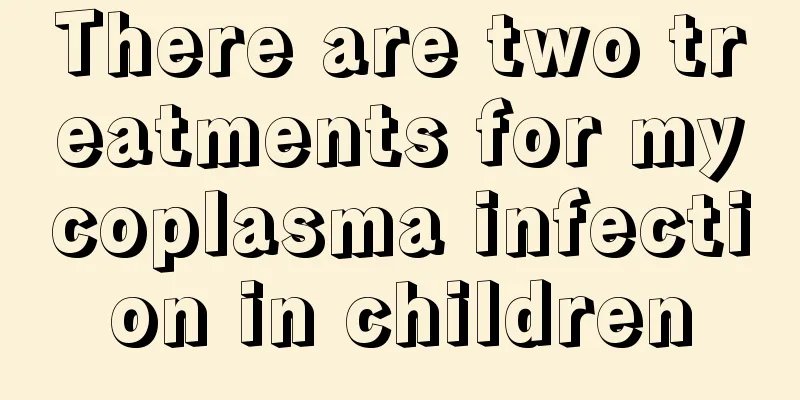What are the symptoms of lead poisoning in children?

|
Children's health has always been a problem for many parents. This is also the reason why parents must pay attention to those factors in daily life that will affect children's health. These are very important. For parents, the question that must be answered faithfully is what is childhood lead poisoning, and then effectively respond to and improve it. This is the best and most beneficial key issue for children's health. What is childhood lead poisoning? For parents, in addition to understanding the symptoms of poisoning, it is also key to understand why lead poisoning occurs, and then effectively prevent it in daily life. This is very critical and is also the responsibility of parents. What is lead poisoning in children? Lead poisoning in children is mostly caused by ingestion through the digestive tract. Infant poisoning often results from licking lead-containing powder off the mother's face, sucking lead-containing ointment applied to the mother's nipples, or the breast milk of a mother with lead poisoning. When children's deciduous teeth erupt, they may be poisoned by chewing on lead-containing paint on bed frames, toys, etc. Children with pica may develop lead poisoning by swallowing large amounts of paint that has fallen off floors or walls. In addition, eating acidic food cooked or placed in lead-containing containers, drinking or eating water and food contaminated by lead, and accidentally taking excessive amounts of lead-containing medicines can all cause acute poisoning. In addition, inhaling lead-containing gases and living in a lead-containing environment for a long time can cause lead poisoning. The oral dose that causes acute lead poisoning is about 5 mg/kg. Symptoms of lead poisoning in children "Poor appetite, abdominal pain, anemia, hyperactivity, and inattention" have all been described as being related to lead poisoning, but these symptoms are not specific to lead poisoning. When the blood lead concentration exceeds 100 micrograms/liter, it will cause harm to health, but the child may not have any clinical symptoms at this time. Therefore, it is best to test your child's blood lead level once when he or she is 1 year old and again when he or she is 2 years old. If the above symptoms of lead poisoning occur, the following lead poisoning detection methods can be used to confirm the diagnosis: 1. Blood lead test is usually used. Blood lead testing methods can be divided into direct and indirect methods: 2. Among the direct methods, the more sensitive and accurate ones are the atomic absorption graphite furnace method and the anodic stripping voltammetry, among which the anodic stripping voltammetry is the most accurate. 3. The indirect method mainly involves the determination of erythrocyte zinc protoporphyrin (ZPP). When the blood lead level is high, the erythrocyte zinc protoporphyrin often increases. Therefore, the blood lead level can be indirectly reflected through the zinc protoporphyrin determination. However, due to the many influencing factors and the imprecision, this method has been basically abandoned. 4. In addition to blood lead, hair lead, urine lead, bone lead, tooth lead, etc. can also be measured, but some of these methods are more complicated and time-consuming, and some have poor accuracy, so they cannot be promoted and applied. Currently, the most recognized method for diagnosing lead poisoning is blood lead. Therefore, for parents, we should talk about what childhood lead poisoning is. Childhood lead poisoning seriously affects children's health. In addition, lead poisoning is often caused by daily necessities in daily life. Therefore, parents must pay attention to it. |
<<: What is the definition and causes of growing pains in children?
>>: Precautions for child safety seats [Hot Mom Baby]
Recommend
What to do if your baby has a fever after getting the chickenpox vaccine
The baby developed a fever after receiving the an...
What are the allergy medicines for children?
Allergy is a common clinical problem. Many reason...
How many of the three major shortcomings in educating babies do you have?
When educating your baby, there are many things t...
How to treat scalp ringworm in children?
Compared with adults, children's bodies are s...
What to do if your child has not had a bowel movement for 3 days
Since newborn babies do not have the ability to d...
What should I do if my three and a half month old baby has a fever?
Adults feel uncomfortable when they have a fever,...
How to treat a child who walks with a crooked foot?
Normally, parents who observe their babies carefu...
What to do if your baby has a poor appetite in summer
Babies have no appetite in summer. You should pay...
What foods are good for children to eat to nourish their brains?
Children's immune systems and organ developme...
Reasons for newborns to cough and sneeze
As the saying goes, nine out of ten babies cough!...
Treatment of bronchitis fever in children
We don't know how much we know about the prob...
What department should I go to for frequent urination in children?
Frequent urination does not only occur in adults,...
What causes joint pain in children?
Children's joints are very fragile and easily...
Bird flu symptoms in children
Avian influenza is a relatively common type of in...
The harm of baby hitting the back of the head
There are many parents who do not supervise their...









